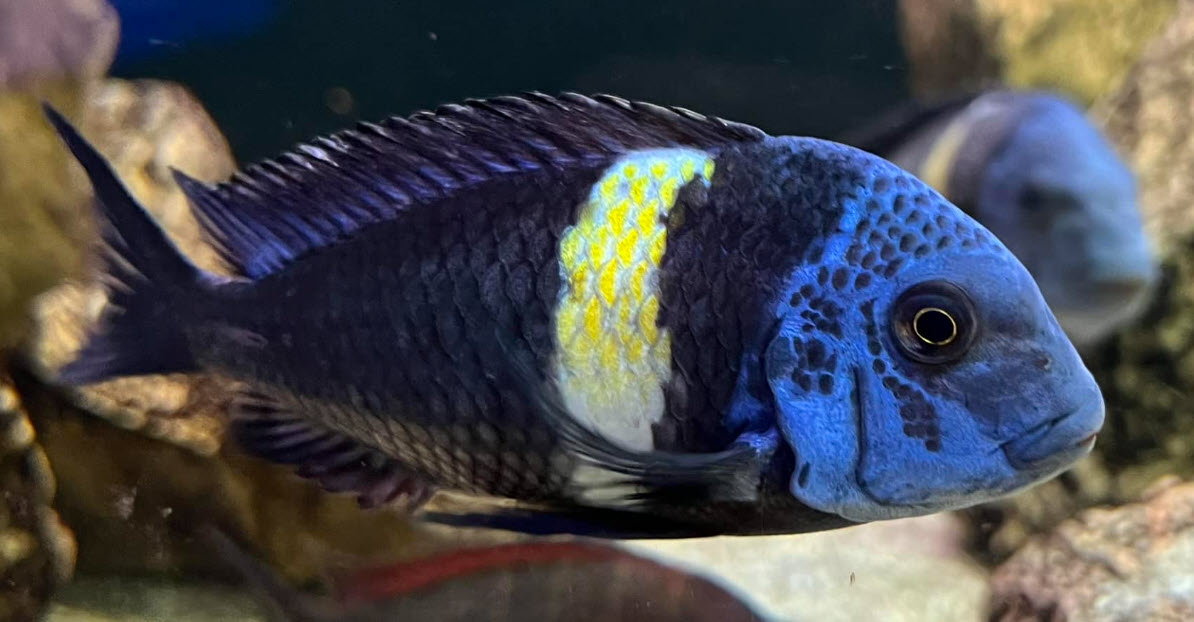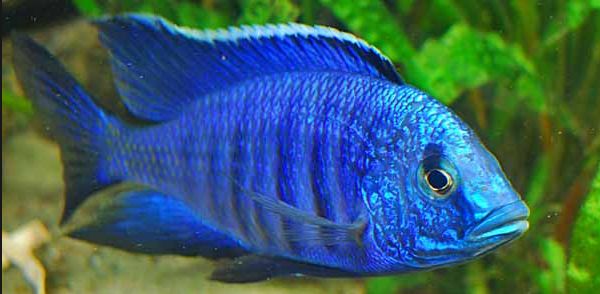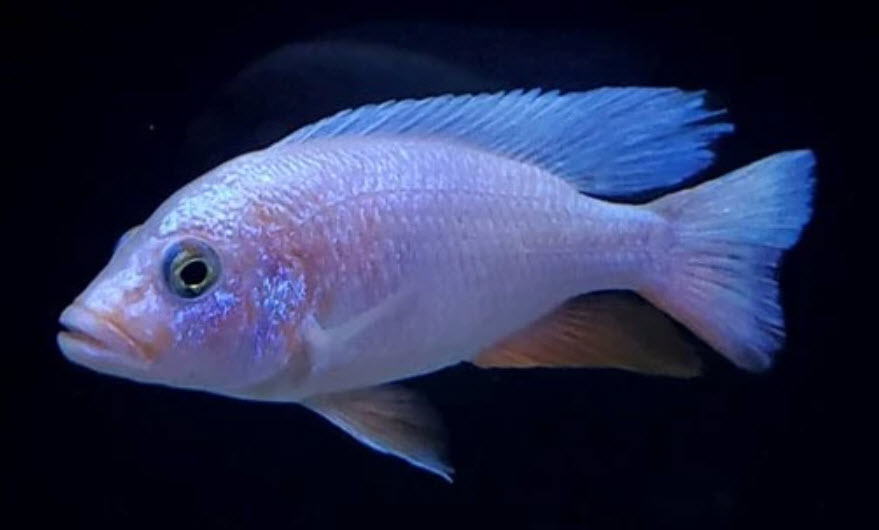
This concept is where a hobbyist doesn’t clean the mechanical filter on a regular basis. Instead they let the solid feces and uneaten food just naturally decompose in a biofilter which acts as an “uncleaned” mechanical filter. If the component is cleaned weekly or so it is defined as a “cleaned” mechanical filter.
Almost all filtration systems have some component in them which acts as either a “cleaned” or and “uncleaned” mechanical filter, trapping particulate and feces on and in their surfaces. Fluidized K1 beds are the notable exception. Fluidized K1 beds need some type of mechanical filtration to weed out the particulate. I use undergravel filters on my fluidized beds. Other use socks, foam or “Pinkie pads”.
If the component is only cleaned like every three months it becomes an “uncleaned” mechanical filter. “Uncleaned ” mechanical filtration is actually only biofiltration being used to break down feces and large particulate in the filter.

Carbohydrate Filtration
Fish excrete some 80% of the carbohydrates they eat but do not metabolize in their feces. Since they excrete 50% of the carbohydrates they eat, 40% of the carbohydrates added to a tank end up in feces in the tank. These carbohydrates break down rapidly into dissolved organic compounds or DOCs. DOCs are deleterious for an aquarium and preventing their formation, in theory, should be a major goal of any fishkeeper.
This DOC formation by carbohydrates in the food is often best addressed by simply having a very high protein food. That is how the author recommends addressing the issue. But some address the issue by using “cleaned” mechanical filtration.

Feces break down into DOCs quite rapidly in most aquariums. So to be effective one needs to vacuum daily and replace or clean the mechanical filtration media at least once a week. I’m just too lazy for that. So I used a huge amount of biofiltration and aeration to rapidly break down the DOCs (K1 fluidized beds coupled with undergravel filters). I used no “cleaned” mechanical filtration at all.
But most folks have very poor filtration with something like a cartridge hang on back filter. Since the feces clump on the outside of the filter cartridge and the beneficial bacteria (“biofiltration”) are on the inside of the filter cartridge, cleaning means removing only the outside gunk once a week or so, while leaving the inside gunk. Since the volume of the inside gunk is very small, hang on back filters are very poor filters for biofiltration while being decent filters for “cleaned” mechanical filtration.
One way around that is to couple a cartridge hang on back with an undergravel filter. The cartridge is thoroughly cleaned once a week, accomplishing decent “cleaned” mechanical filtration. The undergravel is never cleaned, accomplishing good biofiltration and a very good “uncleaned” mechanical filtration.

Nitrogen Filtration
Skipping mechanical filtration only increases the nitrate loading by 5% to 10%, not a huge amount. This practice converts a “cleaned” mechanical filter media to an “uncleaned” mechanical filter media.
Through evolution fish have become very adept at absorbing and using virtually all the food proteins they eat. Only 10% to 20% of the nitrogen nutrient value of the food fish eat is defecated as solids by the fish. This is per about 11 books on fish nutrition. For Instance per the article “Nitrogen Excretion in Some Marine Teleosts” Wood, 1958
“The nitrogen-containing compounds excreted by the sculpin, starry flounder, and blue sea-perch were investigated. Approximately four-fifths of the nitrogenous material was excreted via the gills”.
The 20% of nitrogenous compounds not excreted by the gills can be further broken up into roughly 10% ammonia and urea excreted by the kidneys through the urinary tract and 10% nitrogen containing proteins in the feces.

When the feces hit the mechanical filter, they are set upon by trillions of fast acting heterotrophic bacteria. This further reduces the nitrogen nutrient content to about 5% to 10% of the food input. So, the feces collected by a mechanical filter only has about 5% to 10% of the nitrogenous waste that will ultimately end up as nitrate in the aquarium water.
What this means is that if one is trying to hold a nitrate level of 80 ppm, when one does a water change, with uncleaned mechanical filtration the nitrate level might be 90 but with a cleaned mechanical filter the nitrate level might be 85. The nitrate test kits have great difficulty distinguishing between 40 and 80 ppm so the difference is in the noise and relatively unimportant.
This “uncleaned mechanical filter” or “no mechanical filter” is typically a filter where both solid and liquid pollutants are broken down and oxidized to nitrates. This can be the gravel in under-gravel filter, a K1 fluidized bed, a canister filter or a sump. This is a perfectly acceptable means of mechanical filtration which won’t affect the fish.

Most experienced owners of canister filters only clean them every two to six months. These canisters do no mechanical filtration. All the feces and uneaten food that enters these canisters is broken down in the canisters and disappears into the water. These uncleaned canisters add 10% to 20% to the nitrate loading in an aquarium, not of consequence.
Note using a mechanical filtration media as a biological filtration media ONLY works where the conditions are right for it. A large amount of biofiltration, excellent aeration, low food load, and high nitrogen content of the food in some combination can allow this to occur. If the conditions are not right the mechanical media will simply plug up and drop the flow way down.
One YouTube commentator said he use filter floss to give himself crystal clear water and claimed that this was mechanical filtration. He then went on to say he only cleaned out the filter floss every six months or so. In actuality, he was using the filter floss as a biological filter and as an “UNCLEANED” mechanical filter, not as a “CLEANED” mechanical filter. His conditions were such that this was possible.

Nitrate isn’t Toxic
Then of course there is the simple fact that nitrate isn’t the heavy duty toxin popular mythology says it is. António et. al. 2017 found no long-term effects from a level of 440 ppm nitrate. Monsees et. al. 2016 found the lower long-term damage level for adult cichlids to be 2,220 ppm. Science Direct and Semantics Scholar has several papers available all of which say a level of 440 ppm does no long-term damage to adult aquarium fish.
A recent study exposed young salmon to 440 ppm nitrate for 8 months and they grew just as well as salmon kept at 1/10th that level. Fathead minnow fry were exposed to 1,575 ppm nitrate for seven days and there was no noticeable effect. This was for FRY! For more information read this article:
5.4. Safe Nitrate Levels
.
Return to Filtration Menu
.
Aquarium Science Website
The chapters shown below or on the right side in maroon lead to close to 400 articles on all aspects of keeping a freshwater aquarium. These articles have NO links to profit making sites and are thus unbiased in their recommendations, unlike all the for-profit sites you will find with Google. Bookmark and browse!
.

Dave says
In reply to Brad … You just might be in the “sweet spot” for filtration and need no mechanical filtration at all. Try it with no prefilter for a month or two and see if anything clogs. You might be surprised.
Brad - UK says
Hi Dave,
I use Oase Biomaster Canisters for filtration at the moment – sadly, the Fluval FX series does not fit under my small 25G aquarium! However, I have not had much issue with them, so long live Oase! However, here is a question for you.
The Oase Biomasters have a pre-filter section (with 45PPI foam) which gets cleaned weekly as they are prone to start slowing down the flow – mainly due to poor design (small holes in the pipe) of the pre-filter pipe rather than because there are tonnes of debris to collect. The main unit contains four baskets (K1 media and 30PPI foam) that never get cleaned.
Reading your articles (and thinking about the importance – or -not – of mechanical filtration), I started to think whether the pre-filter for the Oase Biomaster was really actually required. i.e. should I drop it down to 30/20PPI foam and clean a lot less, or even remove the pre-filter sponges and let the main trays address the load? If- then, theoretically, cleaning would be a 4-week affair or, possibly, even never.
I guess my question (and concern with this approach) is whether doing this would force the issue down into the main unit (the K1 and 300PPI sponge filled trays) and actually the pre-filter is doing a good job ‘protecting’ the main unit of large waste particles which could clog. Or actually, there is a good chance that straight pass-through into the main trays would simply be dealt with by the bio-media.
What do you think? It’s worth a try, or do you think the pre-filter is really doing a vital job of protecting the main unit’s bio-filtration, which is (thus far after 8 months) not cleaned and not even dirty on the last inspection. The poorest outcome for me would be that I remove the pre-filter sponges, which causes the main bio-trays to get clogged and end up having to open the main unit to clean – rather than just the simple pre-filter.
Thanks as always for your view.
Regards,
Brad
Anonymous says
while you’re right that there are no drum filters for aquariums, the fleece filters used in the marine hobby are somewhat similar – they do automatically “remove” solid waste from the system, albeit not constantly. They have to be placed in sumps though. And the real drawback is that they’re ridiculously expensive. Probably the most absurdly priced piece of aquarium equipment out there.
But i think they still merit a mention somewhere on ur site, since it’s possible that someday someone somewhere might make models that sell at prices that make sense.
Dave says
In reply to Suzanne ….. That is just a reverse flow to clean feces and debris off the face of the foam. It won’t affect your good brown gunk any. So go ahead and do it.
Mrs Suzanne Carol Moran says
Hi ,I have just bought a new canister filter . It has one thick piece of course foam as the first layer. Then underneath is bio ball. I am going to replace the bio balls with K1 and leave the sponge in
The instructions say to press a button on the canister once a week to clean it. The canister cleans itself and the brown water flows out into the garden.
After reading lots of your articles I don’t know what to do about the cleaning regime.
Please will you give me some advice ?
Many Thanks
Suzanne